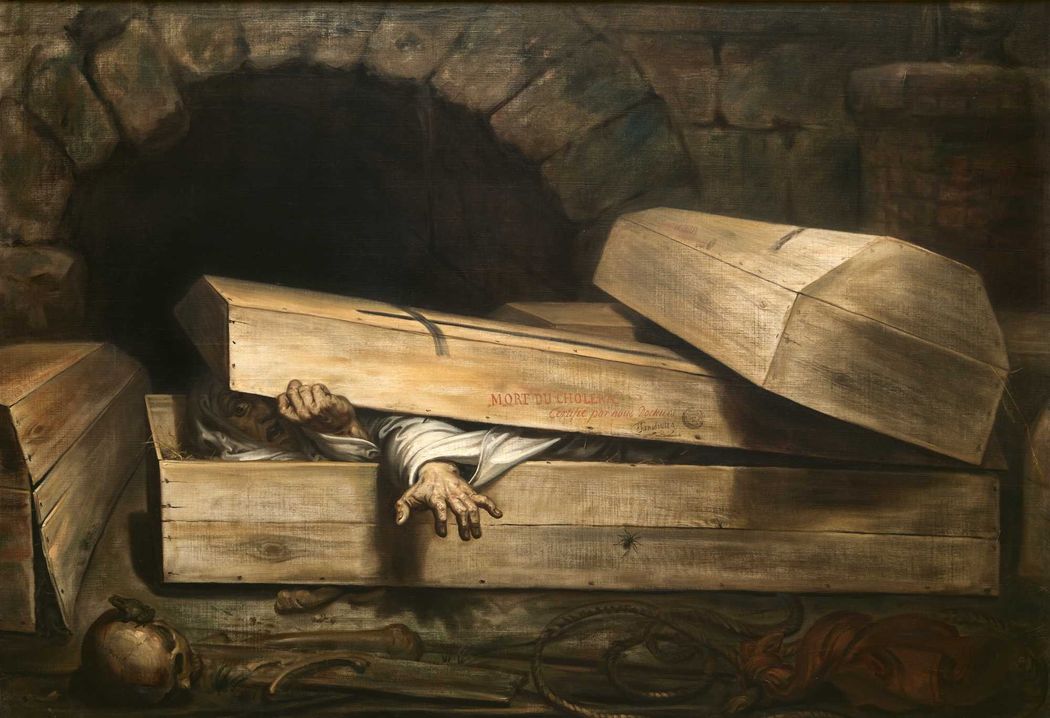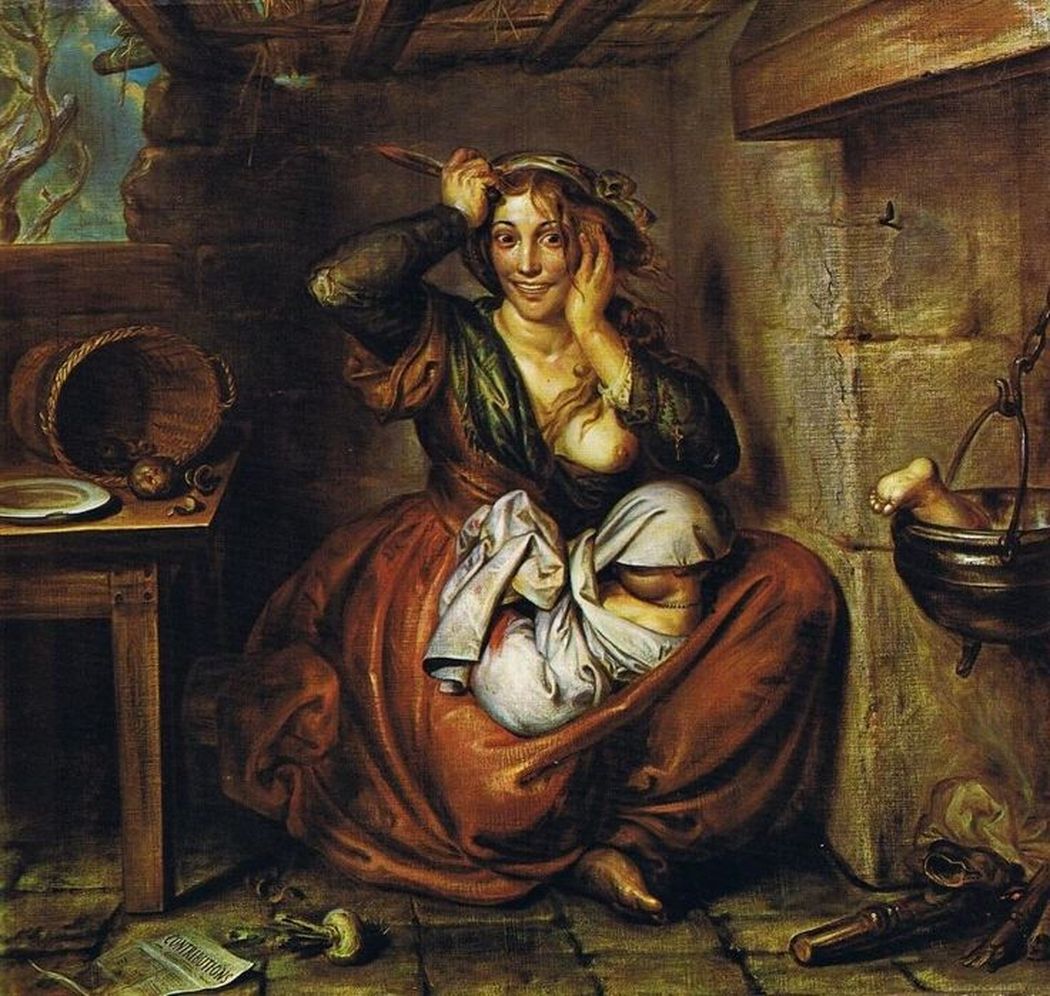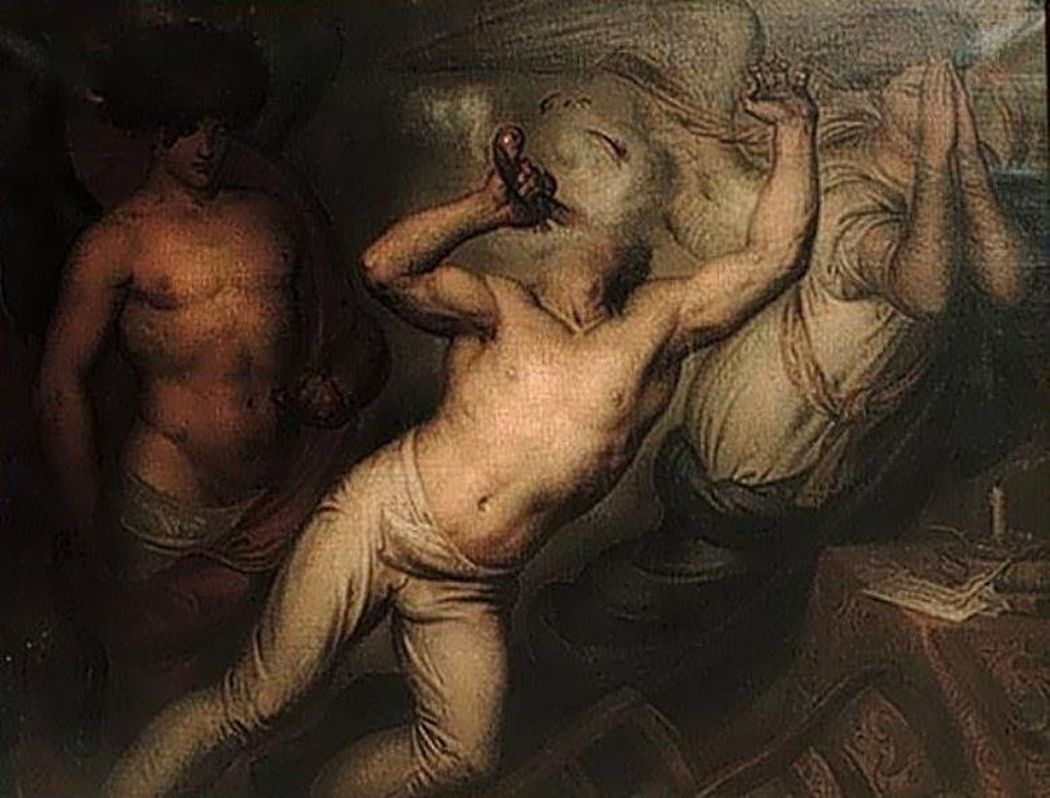Find out more
View the full conference agenda, and reserve your place.
Despite the fact that the Belgian artist Antoine Wiertz (1806-1865) received great public attention during his lifetime, and was granted a state subsidised museum in 1851, for a long time he has been considered as a 'curiosum', an exemplar prototype of the artist as failure.
Wiertz' colossal paintings, a mixture of melodramatic scenes, landscapes, illusionistic nature mortes and portraits were even viewed by some of his contemporaries as a strange, often monstrous potpourri lacking any focus and refusing aesthetic categorisation.

Antoine Wiertz, The Premature Burial, 1854
The depreciation of his work began when, after winning the Prix de Rome in 1832, Wiertz presented his gigantic painting Greeks and Trojans fighting for the Corpse of Patrocles at the Paris Salon of 1839. Parisian academic critics considered this painting to be the perfect example of how the 'sublime' is turned into the 'ridiculous'. Modernist critics were equally severe. Charles Baudelaire described Wiertz as '...that infamous poseur, […] a charlatan, idiot, thief […] who does not know how to draw and whose stupidity is as massive as his giants'. Baudelaire's criticism would set the tone for Wiertz's reception in the twentieth century (in so far as there was any). Despite the fact that Walter Benjamin devoted no less than twenty-one entries of his Arcades Project to Wiertz, describing him as the ideal painter for decorating 'railway stations, legislative chambers, university lecture halls, town halls etc.,' hardly anyone has paid any attention to the oeuvre and life of Antoine Wiertz.
In the very scant references in current art historical scholarship, Wiertz's oeuvre is approached as a Romantic foreshadowing of Belgian surrealism.

Antoine Wiertz, Hunger, Madness and Crime, 1853
Instead of describing him as 'failed artist' or seeking to 'rescue' him by placing his work within established aesthetic categories – whether Romanticism, Decadence, proto-Symbolism or even proto-Surrealism - we would like to revisit the work and life of Antoine Wiertz from another angle.
As Bart Verschaffel already proposed in the journal De witte raaf (March-April 2010), it would be far more interesting to look at how, in his art and his theoretical writings, Wiertz presents himself as the acclaimed genius and universal artist. Part of this process of self-canonisation was the idea of the museum. By not selling his work, and by refusing to limit himself to one genre, Wiertz painted and collected an oeuvre that is entirely conceptualised through the museum. In using the museum as a strategy to place himself on a continuum with his great examples, Peter Paul Rubens and Michelangelo, he also sought to make himself immune to any contemporary art criticism, instead entering the realm of consecrated and eternal art. When the Belgian government granted him a dedicated museum in 1851, Wiertz seemed to have achieved his dream.

Antoine Wiertz, The Suicide, 1854
Viewing Wiertz from this point of view opens up a range of new possibilities. It raises the question of how the relatively new public institution of the museum shapes the identity and public impact of the modern artist. Equally important is how Wiertz's idea of the museum can raise questions about the historical conceptions of the museum itself as a regulating force in the experience of art.
Unlike the dominant idea that the nineteenth-century museum is a site for disinterested, aesthetic, indeed Kantian experience of art, the Musée Wiertz can be conceptualised as a theatrical and even immersive space that solicits the complete involvement of the spectator. By using spectacular and theatrical strategies of display for his melodramatic paintings of social misery, Wiertz could create an entirely different experience of the work of art, questioning the idea of the disinterested gaze as the dominant mode in experiencing the work of art.
On the one hand this can be compared to older pre-Aesthetic traditions that view art as living presence, but, on the other, the Musée Wiertz could be considered to be part of an emerging spectacular mass culture. We would therefore argue that Wiertz, his oeuvre and his museum, are at the intersection of different, but intertwined discursive practices dealing with the changing function of the museum, of the artist's identity or of the experience of art in the first half of the 19th century.
We aim to present the first results of this new approach at a one day conference to be held at the Musée Wiertz. The workshop will be held in the studio of Antoine Wiertz that in 1868 became the Musée Wiertz.
- Stijn Bussels (Leiden), Peter Carpreau (M Museum Leuven), Bram Van Oostveldt (Leiden/Amsterdam), Dominique Marechal (KMSK Brussels) & Caroline van Eck (Cambridge)
View the full conference agenda, and reserve your place.